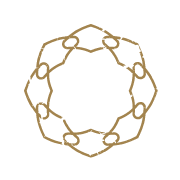The Importance of Structure!
I started back training this week after 12 days of laying off, limiting movement, and reducing stress on the body. This gave my body the time it needed for inflammation to do its thing and for my injury to start healing — without adding more stress to the system.
Now that I’m out of the acute phase, it’s time to train again — and to make sure this injury in one part of my body doesn’t cause deterioration everywhere else.
As I often say: Don’t let local injury become global weakness.
The Sandbox Theory
This got me thinking about the importance of having a malleable practice contained within a solid structure.
The way I see it, with a solid movement practice, I have the freedom to play and explore — but within the boundaries of my goals, my accessibility, and my ability. Without those boundaries? I’m just wandering in the desert.
How This Shows Up in Training
Most people don’t have structure in their training. They have the desire to “get fit,” but no plan.
They go to the gym, wander between machines, maybe lift some weights, stretch a little, and then hop on a cardio machine because it feels straightforward.
All the best intentions in the world — but no road map to the destination.
Another group might bounce between random classes through ClassPass. Fun? Sure. Structured? Not so much.
Then there’s the group that joins a system — maybe yoga, Pilates, kettlebells, CrossFit, or powerlifting. This is a step up, because structure and progression are baked in. This is where real progress starts to happen.
The only issue? Dogma.
If you get so locked into one system that you believe it’s all you need, your sandbox starts to shrink. Before long, that sandbox becomes a movement prison.
We’ve all seen it — the yogi who refuses to lift weights, the iron pusher who refuses to stretch, or the runner who avoids strength work entirely.
Systems Are Tools — Not Identities
A good carpenter knows how to use the right tool at the right time — and over years of work, they build up a whole toolbox. They might have favourites, and they might debate why they use one over another.
But if all you own is a hammer, everything starts to look like a nail.
And let’s ruffle a few feathers for a moment. No one can claim ownership over movements or methodology.
Josef Pilates, a circus performer, would turn in his grave if he saw what modern studios have done to his method. Early yogis would be horrified at the commercialised, cookie-cutter versions of their practice. The strongmen that toured the beerhalls of Bavaria would be baffled by the arbitrary rules we’ve imposed on lifting weights.
Why? Because these original systems weren’t meant to be cages — they were meant to be concepts, open to adaptation and evolution. Which is how they even came to be in the first place.
My Current Sandbox
As I start back into training, my goals haven’t changed:
Get as strong and mobile as possible without compromising movement quality.
But my parameters have:
No neurally demanding loads, so I don’t interfere with injury recovery.
Train with only one leg available.
Maintain coordination and equilibrium despite the limitation.
Balance tension with relaxation.
My Approach:
Stick to my core format: push something, pull something, pick something up, squat with something, and rotate.
Use more machine-based training to avoid instability from kettlebells and barbells, while still maximising range of motion to train strength and mobility together.
Lower body: single-leg drills and bodyweight movements.
Coordination: Indian clubs to rotate both ways and keep both sides of the body engaged.
Skill-building: learn a seated skill to replace my usual football practice and keep neuroplasticity alive.
Recovery: breathwork and stillness to promote softness.
All of this fits my sandbox because I see systems as tools, not dogmas carved in stone.
How This Works in Our Gym Programming
At Uptown Movement, we program for concepts — not rigid rules. That gives members the freedom to adapt and still progress.
A perfect example is Maddie. She’s dealing with a foot injury, and the program called for jumps. She couldn’t jump, but instead of skipping the exercise, we looked at the concept: extending ankles, knees, and hips explosively. We found a variation she could do, keeping most of the benefit without the impact.
This is why we build big sandboxes. If all I believed in was running or barbells, I wouldn’t just be wandering the desert — I’d be stuck in a tent.
Grow your sandbox. It takes time, curiosity, and commitment.
The repetition of patterns and concepts is key — but the way you approach them can (and should) be varied and exploratory.
